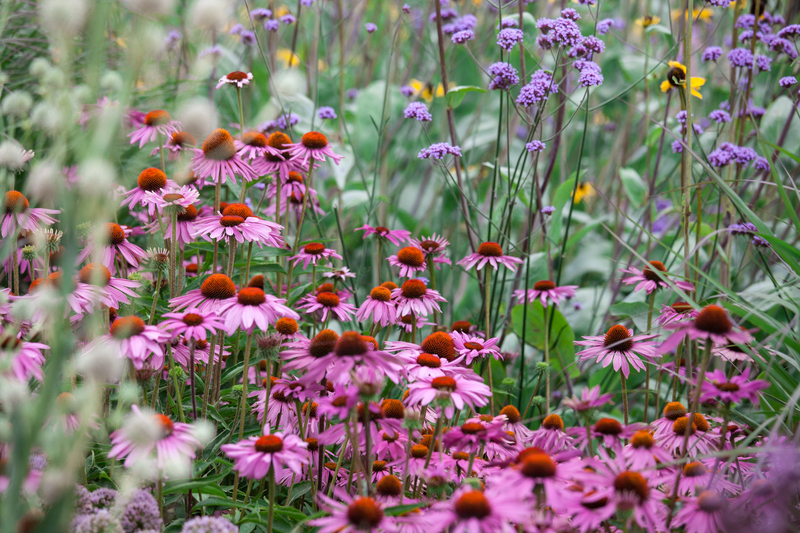Creating a Drought-Resistant Lawn for the Hot Season
Introduction: Why a Drought-Resistant Lawn Matters
Water scarcity and high temperatures are becoming more common with climate change. Homeowners are looking for smart, sustainable landscaping solutions to keep their yards beautiful despite hot, dry conditions. A drought-resistant lawn is not just environmentally responsible; it also saves time, money, and water. In this comprehensive guide, you'll learn how to create a lawn that stays green and healthy through the scorching summer months.

Key Benefits of a Drought-Tolerant Lawn
- Water Efficiency: Reduces outdoor water use, easing strain on local resources.
- Lower Maintenance: Less watering and mowing required to keep grass looking fresh.
- Resilience: Stands up to extreme weather and requires less chemical intervention.
- Cost Savings: Lower utility and maintenance bills over time.
- Environmental Impact: Supports local ecosystems and reduces runoff pollution.
Choosing the Right Grass Variety for Hot, Dry Conditions
The foundation of every drought-resistant lawn is the selection of appropriate grass species. Not every grass is created equal. Some varieties thrive in arid climates and withstand prolonged periods without water.
Top Drought-Tolerant Grass Types
- Bermuda Grass - Excellent heat and drought resilience, dense growth, ideal for full sun.
- Zoysia Grass - Tolerates drought and light shade, slow growth but forms a thick carpet.
- Buffalo Grass - Native to North America, ultra-low water requirements, minimal mowing.
- St. Augustine Grass - Prefers warmth, endures drought, performs well in partial shade.
- Tall Fescue - Adaptable, deep root system for moderate drought conditions.
When planning your drought-resistant landscaping, consider your regional climate, soil type, and sun exposure. Consult with your local garden center or Cooperative Extension office to identify the ideal grass mix for your area.
Soil Preparation: The Secret to Deep Roots and Water Retention
Even the most robust grass struggles without healthy, well-conditioned soil. To maximize water retention and support deep roots, invest in proper soil preparation:
- Test Soil pH: Most grasses thrive in soil with a pH of 6.0-7.0. Adjust with lime or sulfur if necessary.
- Add Organic Matter: Work in compost or well-rotted manure to increase moisture holding capacity.
- Aeration: Compacted soil restricts root growth. Use a core aerator to improve air, nutrient, and water flow.
- Amendments: Mix in sand for heavy clay soils or additional compost for sandy soils to balance drainage and retention.
Well-prepared soil can reduce irrigation needs by up to 50%, a critical step in drought-proofing your lawn.
Smart Watering Strategies: Nurturing a Deep Root System
Efficient watering is crucial to maintaining a lush, drought-tolerant lawn. Instead of frequent, shallow watering, use the following smart irrigation techniques:
- Water Deeply, But Infrequently: Aim for one to two deep soakings per week (about 1 inch), rather than daily sprinklings. Deep watering trains roots to grow downwards, accessing moisture even during dry spells.
- Early Morning Irrigation: Water between 4-9 a.m. to minimize evaporation and prevent fungal disease.
- Drip or Soaker Systems: These deliver water directly to the soil, greatly reducing waste.
- Rain Sensors and Timers: Automate your watering and save money by connecting sensors to your irrigation system.
Check your soil moisture by probing six inches down; if it feels dry, it's time to irrigate. Overwatering is as harmful as drought, so be conservative.
Mulching: Nature's Shield Against Dryness
Applying mulch is a simple yet powerful step to lock in soil moisture and reduce evaporation. Organic mulches, like shredded bark or compost, also enrich the soil as they decompose.
- Grass Clippings: Leave them after mowing--they act as a free, moisture-retaining mulch.
- Wood Chips or Bark: Spread around trees, shrubs, and the perimeter to keep roots cool.
- Compost: A thin layer across bare soil areas improves retention and drought resilience.
Keep mulch about 2-3 inches thick. Avoid piling mulch against grass crowns, which can lead to fungus and rot.
Lawn Maintenance Practices for Drought and Heat
Caring for your drought-resistant lawn goes beyond watering. Implementing smart lawn care practices will help your yard withstand heatwaves and remain attractive:
Mow High and Mow Less Often
Raise your mower blade to leave grass 3-4 inches tall. Taller grass shades the soil, preserving moisture and promoting deeper roots. Mowing less often also reduces stress on your lawn during hot months.
Fertilize Wisely
- Use slow-release, organic fertilizers rather than high-nitrogen synthetic blends.
- Apply in spring and fall--not during peak heat--to avoid burning the lawn.
- Moderation is key: Excess nutrients can trigger shallow, thirsty growth instead of drought resilience.
Control Weeds Naturally
Weeds compete for water and nutrients. Use thick turf and proper mowing as your first defense. Spot-treat problem areas with organic herbicides or hand-pulling.
Minimize Lawn Traffic
Repeated foot traffic compacts soil and injures grass, making it harder to recover from drought. Use walkways or paths to protect sensitive areas during July and August.
Alternative Drought-Resistant Landscaping Ideas
Lawns don't have to be vast swathes of water-hungry grass. Integrate drought-tolerant landscaping elements for beauty and sustainability:
- Groundcovers like clover, creeping thyme, or sedum add color and require less water.
- Xeriscaping with ornamental stones, boulders, or gravel for a stylish, arid look.
- Native Plants have evolved to thrive in your region's climate.
- Wildflower Meadows deliver color, support pollinators, and usually survive with rainfall alone.
- Rain Gardens capture and use runoff to irrigate your landscape efficiently.
Blending these approaches with your main lawn area boosts biodiversity and increases your yard's overall drought resilience.
Problems to Watch For in the Heat
Even a well-prepared drought-tolerant lawn can face challenges during especially severe hot seasons. Look out for these common summer problems:
- Heat Dormancy: Many grasses naturally turn brown in extreme heat but green up again with rain or cooler temperatures.
- Disease and Pests: Stress makes grass vulnerable. Practice proper spacing, mowing, and irrigation to prevent outbreaks.
- Compaction and Thatch: Poor drainage and root restriction--core aerate annually if needed.
- Overfertilization: Too much fertilizer can burn lawns in heat--stick to the schedule.
Patience is vital. Don't rush to re-seed or fertilize brown lawns until fall (autumn is the best season for recovery), as most robust grasses will revive with cooler weather.
Conserving Water while Achieving a Green Lawn
Water conservation is a fundamental part of building any drought-resistant yard. Additional techniques include:
- Rainwater Harvesting: Collect rain in barrels for irrigation.
- Greywater Systems: Recycle household water for landscape use where regulations allow.
- Audit Irrigation Systems: Regularly check for leaks or misdirected spray.
- Incorporate Permeable Hardscapes: Pathways and patios allow water to seep into the soil.
Small changes can yield a major reduction in water use while keeping your lawn healthy and attractive through the harshest heat.
Sustainable Lawn Design: Reducing Your Turf Footprint
Rethink the traditional, sprawling grass yard. By minimizing turf area and integrating hardy plants, you can create a striking landscape that demands less water and effort.
- Replace Lawn with Beds: Flower beds or shrub borders are more water-wise.
- Expand Outdoor Living Spaces: Decks and patios cut down on thirsty lawn space.
- Natural Edges: Let some areas transition to native "prairie" or meadow for a unique look.
Design with intention, focusing on function, beauty, and sustainability. Many cities even offer rebates for replacing turf with drought-tolerant alternatives!

Frequently Asked Questions about Drought-Resistant Lawns
- How quickly will my lawn become "drought-resistant"?
With the right soil prep, grass selection, and watering schedule, you'll start seeing improvement within one growing season. Full resilience develops as roots deepen over time. - Is artificial turf better than drought-tolerant grass?
Artificial turf saves water but gets hot to the touch and lacks environmental benefits like cooling, oxygen production, and habitat for wildlife. - Can I grow a drought-resistant lawn from seed?
Yes! Many drought-tolerant species are available as seed, which is cost-effective for establishing or overseeding an existing lawn. - Are these lawns pet and child friendly?
Certainly. Grasses like Bermuda, Zoysia, and Buffalo are safe and resilient for everyday activities.
Conclusion: Your Path to a Heat-Proof Lawn
In today's climate, a drought-resistant lawn is the smart choice for every homeowner facing hot, dry summers. Through the right grass varieties, careful soil preparation, efficient watering, and eco-friendly landscaping, you can enjoy a vibrant, resilient yard all season long.
By making these sustainable changes, you'll save water, reduce costs, and support the environment--all while keeping your outdoor space lush and inviting.
Start your journey now, and transform your traditional grass patch into a beautiful, drought-tolerant lawn that stands strong even in the toughest heatwaves. For more tips on lawn care and climate-resilient gardening, subscribe to our newsletter!